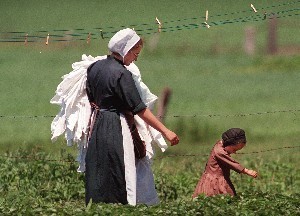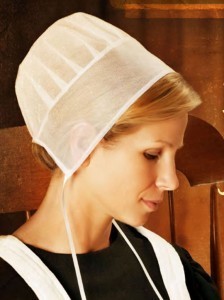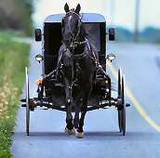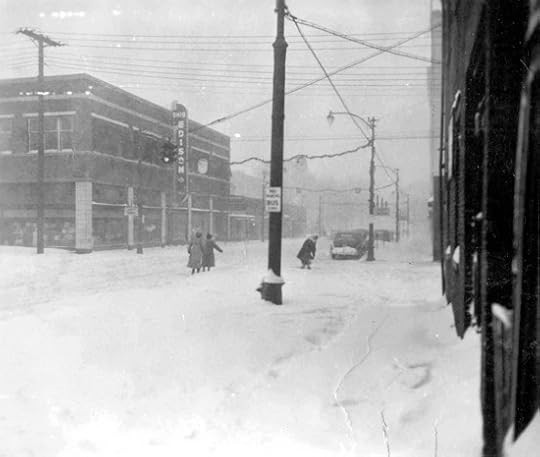Patrick E. Craig's Blog, page 9
October 18, 2012
Meet the Springer Family of Apple Creek, Ohio: Jerusha
The days of Jerusha’s childhood in Apple Creek, Ohio, had been good days, filled with the comfort of a stable family and the practice of her faith. Her family was Old Order Amish and she loved the ways of her people. The Hershbergers lived on one of the largest farms in Apple Creek. They had been in America for over two hundred years, since the “Plain People” accepted William Penn’s offer of religious freedom, and when the first Amish came to Pennsylvania from Switzerland in 1720 there had been Hershbergers among them. When the Amish moved west in the early 1800′s the Hershberger family had followed and they arrived in the village of Apple Creek in 1857. The land was fertile and open and greatly suited the Amish folk and their agricultural ways. The Hershberger family had homesteaded a tract of land outside the village and over the years they had purchased neighboring farms. Now they held over two hundred acres of the most fertile land in the township and Hershberger milk and cheese were renowned throughout Wayne County.
During her childhood, the rest of the nation was suffering through the Great Depression, and the Amish were not sheltered from the turmoil of those years. The difference for the Amish was that they were better at doing more with less. The Hershberger family and their neighbors simply pulled inward and depended on each other, so Jerusha grew up in an atmosphere of love, self-sufficiency and community. From time to time homeless men would wander through the village. They would be fed, given a place to rest, and then most would move on. There were no homeless among the Amish and Apple Creek remained an island of safety and prosperity in those troubled times.
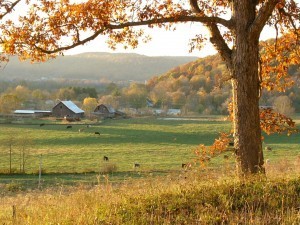 Jerusha loved the sense of continuity that pervaded every aspect of her young life. Her family could trace their roots all the way back to Jacob Amman and the original Amish who had broken with the Mennonites in 1693. They took pride in the fact that they still clung to the old ways, and they took great pains to separate themselves from the world and live quiet lives. Jerusha’s days were filled with the simple tasks of a farm girl, planting in the spring, tending the animals, cooking for her father and brothers as they harvested the corn and wheat. She watched her grandmother and mother can and preserve the garden produce and put up the fruit for the winter. They filled the root cellar with potatoes, onions and barrels of apples. Her father brought ice from the winter pond and packed it into the cold house, which was dug into the side of a hill behind the house. Then they prepared hams, chickens and sides of beef and stored them away for the festive dinners and holiday celebrations that were the hallmark of her youth. Jerusha’s father was an Armendiener, a deacon, and she loved to sit quietly while he read from the Bible during the Sunday meetings. The scriptures came alive to her as he read and his rich, baritone voice soothed her and filled her with a certainty that the God her family served could only be a good and loving God.
Jerusha loved the sense of continuity that pervaded every aspect of her young life. Her family could trace their roots all the way back to Jacob Amman and the original Amish who had broken with the Mennonites in 1693. They took pride in the fact that they still clung to the old ways, and they took great pains to separate themselves from the world and live quiet lives. Jerusha’s days were filled with the simple tasks of a farm girl, planting in the spring, tending the animals, cooking for her father and brothers as they harvested the corn and wheat. She watched her grandmother and mother can and preserve the garden produce and put up the fruit for the winter. They filled the root cellar with potatoes, onions and barrels of apples. Her father brought ice from the winter pond and packed it into the cold house, which was dug into the side of a hill behind the house. Then they prepared hams, chickens and sides of beef and stored them away for the festive dinners and holiday celebrations that were the hallmark of her youth. Jerusha’s father was an Armendiener, a deacon, and she loved to sit quietly while he read from the Bible during the Sunday meetings. The scriptures came alive to her as he read and his rich, baritone voice soothed her and filled her with a certainty that the God her family served could only be a good and loving God.
If God is anything like my daed, she often thought, then God must be wonderful.
When she was old enough, her father gave her the job of bringing home the milk cows every evening. Sometimes Jerusha would have to tramp for miles to find them, but she thoroughly enjoyed it. Like most farm children, she liked being alone. In those days, before World War II, the fields around Apple Creek were open to the horizon and there were many stands of trees with small creeks and ponds. Jerusha found great comfort in the simplicity of her life as she wandered through the fields and woods. Every so often she would see someone in an automobile far off in the distance driving along State Highway 30, or hear the train chugging along the tracks to parts unknown, its mournful whistle seeming to warn of the dangers and sorrows of a complicated modern world. At these times Jerusha would kneel down on the earth and touch the grass, or stop by a cold clear brook and dip her hands in the water, feeling the coolness on her skin and letting her thoughts focus on the power of a God who could create such beauty with a spoken word. She did not comprehend the deeper theological issues that surrounded her faith, nor did they really interest her. She only knew that at some time in the past, wise men had led her people away from the traps and pitfalls of a world that catered to the basest side of men’s natures and kept them from fixing their attention on this God of wonders that revealed himself to her in every wooded path and every spring flower.




October 2, 2012
A Quilt For Jenna: Meet the Springer Family of Apple Creek
Creating characters is probably the single-most important part of novel writing, and at the same time the most difficult. If your reader can’t identify with your characters, it won’t matter how exciting or ingenious the plot is – the reader will abandon your book for more believable characters elsewhere. Your readers will only be interested in “what happens next” if they care about the people at the heart of the action. The secret to great characters is making the audience care.
So how do you create characters that the readers care about? I think the secret is found within your own life. I find my characters in me, both the male and female ones. I create them through the filter of my own experiences. When my characters face a conflict, somewhere in their dilemma is a circumstance that I went through in my own life where I either met the challenge successfully or failed miserably. These incidents are the guideposts of every life and a good writer remembers them and articulates them in such a way that the reader can totally identify with the situation. That’s how you pull them into the story. Good writing is creating scenes where the audience can say, “I was there, I saw that very sunrise … I went through that identical trauma.”
With that in mind I would like to introduce you to the characters in The Apple Creek Dreams Series; characters that seemed to spring full grown out of the fertile soil around Apple Creek, Ohio to populate the pages of “A Quilt For Jenna.” Jerusha, Reuben, Jenna and Jenny Springer; Bobby Halverson, Henry Lowenstein, Mark Knepp, even Dutch Peterson and Edgar Thompkins. And in the second novel, “The Road Home,” you will meet a grown-up Jenny Springer, Jonathan Hershberger, Rachel and Robert St. Clair. These are people that I have come to know and even to love.
Yes, writers are strange.
In the next post, we’ll meet Jerusha Springer




October 1, 2012
Amish 101 – Amish History & Settlement in America – Daily Lives & Beliefs of the Amish
Here’s an interesting website for those of you who are curious about the Amish: where they came from, what their beliefs are and how they arrived in America …
The Amish people in America are an old religious sect, direct descendants of the Anabaptists of sixteenth-century Europe. Not to be confused with the term anti-Baptist, these Anabaptist Christians challenged the reforms of Martin Luther and others during the Protestant Reformation, rejecting infant baptism in favor of baptism (or re-baptism) as believing adults. They also taught separation of church and state, something unheard of in the 16th century. Later known as the Mennonites, after the Dutch Anabaptist leader Menno Simons (1496-1561), a large group of Anabaptists fled to Switzerland and other remote areas of Europe to escape religious persecution.
During the late 1600s a group of devout individuals led by Jakob Ammann broke away from the Swiss Mennonites, primarily over the lack of strict enforcement of Meidung, or shunning – excommunication of disobedient or negligent members. They also differed over other matters such as foot washing and the lack of rigid regulation of costume. This group became known as the Amish and, to this day, still share most of the same beliefs as their Mennonite cousins. The distinction between the Amish and Mennonites is largely one of dress and manner of worship.
via Amish 101 – Amish History & Settlement in America – Daily Lives & Beliefs of the Amish.




September 30, 2012
Apple Creek, Ohio Again: From “The Road Home”
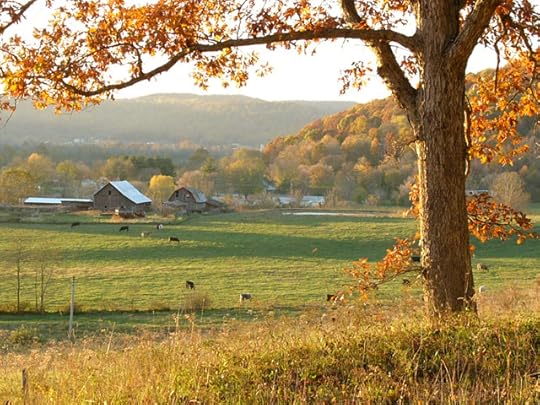
Apple Creek, Ohio – 1965
There is something about an agricultural town that is unique and wonderful, for with the deep link to the land comes a settled-ness and a sense of permanence found nowhere else. All the bright days of youth in such a place are held in the mystery of God’s eternal circle of life and death, winter and spring, summer and fall. The cycles of the seasons dictate the deepest feelings in the heart of one who dwells there, with days marked, not by events, but by smells and colors and sounds and all the other sensory signals. The temperature of a morning’s rising can tell you everything about the day ahead, be it the coolness of a daybreak in spring, the heat of the long, languid days of summer, the crisp bite of a fall day, or the chill of winter that pushes you with icy fingers back under the welcoming warmth of the lovely down quilt. The lilting chirp of a robin outside an open window, or the haunting call of the Canadian geese heading south can manifest the procession of days more surely than any calendar. The solemn silence of a winter night, with feet softly crunching on the fallen snow as you make your way toward the light in the window ahead, or the grinding of the machinery and the smell of the thick harvest dust, it is these things that mark the passage of time and bind one surely to the beloved land and the life so graciously granted by the Master of the Vineyard.
Apple Creek, Ohio, is such a place. It is especially beautiful in the fall. The leaves of the Buckeye trees turn bright red and the green, spiked pods that hide the horse chestnuts split open and drop their beautiful brown seeds on the ground. Children pile the leaves into forts and arm themselves with the shiny brown nuts against the trespasses of the kids from down the street. Mornings come armed with the warning bite of winter yet to come and the air itself is alive with the promise of families gathered at festive tables and the wonder of frosty nights that delight the heart with cathedrals of starry splendor. Soon the soft snow will blanket all living things in the quiet death of winter but not yet, no not yet; for it is harvest time and the cycle of life is at its peak.
The fields surrounding the village are ripe and the air is heavy with the fecundity of the yearly progression come to its fullness. Though the world changed greatly after World War II and the Korean War, Apple Creek remained much the same. Even as the nation wandered into the disaster in Vietnam, the Amish community in Wayne County remained above the growing conflict and social revolution that would follow. It was as though Apple Creek had been captured in a back-eddy of time and slowly drifted in a lovely continuity of days, while the main current of civilization rushed by into an unknown and frightening future. The Amish in Apple Creek were connected to the land and the land was forever. The fields stretched to the horizon and the days were like the fields; reaching back into the permanence of the past and extending onward into a future that they knew held the same tasks, the same demands, the same feasts and the same succession of birth, life, and death. And yet they were not afraid of death for they had their God and his promises, they had the land and the fruit of the harvest each year, and they had the children who were their inheritance and, at the same time, a down payment on the continuance of their lives. And above everything, they had the simplicity of their way. And it was enough … for some.




September 24, 2012
There is a River: From “A Quilt For Jenna”
Time ran like a river through her days, deep and smooth with no rapids to jostle and no danger to steer clear of. It was as though she could see all the way back to that time when her family began and then look forward into the future to see her children and her children’s children going on in the way that never changed, and never ended. She was linked to a legacy of family and faith and yet at the same time she was the root of a history that would continue after her days on the land. To be a partaker of such permanence and contentment was all she had ever wanted and now she moved through the dream-like time in a steady and inexorable routine; rising in the morning with a sense of expectation, taking joy in the simple and the mundane, and sitting in the cool of the evening, reading from the Word or talking quietly with her husband. All the parts of her life moved together with a clock-like precision – every moment interlocked with the one before and the one after.




Amish Harvest Season – God’s Goodness – From “A Quilt For Jenna.”
Bringing in the Harvest
Reuben worked dawn to dusk in the fields beside the other men and they moved from field to field, harvesting corn, wheat, potatoes, and barley in such abundance that more buildings were quickly constructed to contain it all. Often the men would stop at the end of a day and stand with their hats in their hands while the sun set in the west, and sing together of God’s goodness and blessing.
As the fall turned toward winter and the chill mornings began to take their place in the stream of things, Jerusha began to look forward more and more to the birth of her baby. The harvest was in and the fall weddings had taken place and now Jerusha was in the last days of her pregnancy. She had put on weight and she felt awkward and unlovely, but Reuben paid more attention to her than normal and saw to it that she was comfortable and cared for. Most of all, he expressed his love for her in a hundred simple ways; from helping with housework to bringing her small gifts. One day she found a wonderful handcrafted cradle set beside the bed. It was made of clear pine and detailed beautifully and she realized that Reuben must have worked on it for months. So life proceeded toward the event that would change their lives forever. Jerusha and Reuben simply let the days carry them along in their current, content with the simplicity of their life and settled into what they believed would be the rhythm of all the days to come.
Harvest Season in Ohio – Interesting site with the Ohio Harvest Calendar.




September 18, 2012
Welcome To The “Apple Creek Dreams” Blog – Starting the Amish Journey

The Apple Creek Dreams blog is my newest venture in internet publishing. I am starting it to give all my friends and subscribers the latest information on my new Apple Creek Dreams series, published by Harvest House Publishers. The first book, “A Quilt For Jenna,” will be published in February of 2013, followed by “The Road Home” in June, and “Rachel’s Choice” in January of 2014.
Set in the real town of Apple Creek, Ohio starting in the 1940′s, the Apple Creek Dreams series will bring to life the Hershbergers and the Springers, Amish families living in the heart of Amish country in Wayne County, Ohio. The books will feature memorable characters like Jerusha Hershberger-Springer, the master quilter of Apple Creek, Rueben Springer, the Amish man who won the Congressional Medal of Honor on Quadalcanal, Jenny Springer, the little girl adopted by the Springers after they found her lost in the great Thanksgiving Day snowstorm of 1950, and Rachel St. Clair Hershberger, an Amish teenager who discovers that fate has made her the heir to the fabulous St. Clair fortune.
Along with the Springers and the Hershbergers, the Apple Creek Dreams blog will keep you updated on Amish culture, history and beliefs, and even Amish recipes. From time to time I hope to have guest posts by some of the top Amish writers, so stay tuned and be sure and subscribe to the Apple Creek Dreams blog.
Patrick




September 17, 2012
Thanksgiving Day Storm – Nov. 23-27, 1950
A Quilt For Jenna is set in the middle of the Great Thanksgiving Storm of 1950. The storm was a real storm that happened over the Thanksgiving weekend that year. It was also called The Storm of The Century. Read more about it and watch the video of the Ohio State-Michigan football game that had to be played because a trip to the Rose Bowl was on the line..
November 23-27, 1950: Great Thanksgiving Storm The Thanksgiving snowstorm of 1950 was the deepest in Ohio’s history. Nearly the entire state had over 10 inches and most communities in the eastern half of Ohio measured 20 to 30 inches of snow during this storm. As the storm strengthened, winds increased to over 40 mph and a severe cold wave swept the state early on Friday November 24 th dropping temperatures to near zero. The worst storm conditions occurred on Saturday November 25 th as near-blizzard conditions prevailed throughout Ohio. By late in the day, snow depths reached 20 inches in eastern Ohio and drifts were 25 feet deep. See the film and read more here …
History of the storm and its effects on the Eastern Seaboard and the Midwest.
Here’s an article about the storm from the Duquesne Times.




September 10, 2012
The Great Thanksgiving Storm – from “A Quilt for Jenna”
[image error]
On the day before Thanksgiving, far to the south of Ohio, in northeast South Carolina, a small cold front began moving up the east side of the Appalachian Mountains. The ocean temperatures had been cooler that fall, and the low pressure to the east forced the rapidly growing weather pattern into a path headed directly up the East Coast. Air pressure inside the front began to plummet and the storm soon became a full-blown cyclone. On the east side of the storm, states from Alabama to New Hampshire reported record cold temperatures as the storm developed.
On Thanksgiving Day, the storm arrived over Washington, D.C., and barometric pressures fell rapidly. The storm began to turn westward, and as it built in ferocity, it bore down on Dalton, Ohio and the little town of Apple Creek to the west. It was coming like a runaway freight train.




August 29, 2012
Apple Creek, Ohio – The Heart of Amish Country
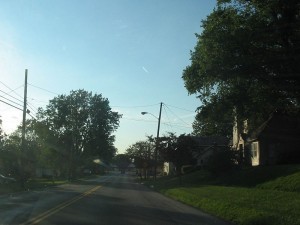 Apple Creek, Ohio, is a real place. It is a village set in the heart of Wayne County, Ohio, eleven miles from Dalton and ten miles from Wooster. There are real streets and real people in Apple Creek. There are Hershbergers and Springers and some Halversons living there. Apple Creek and the surrounding area is home to a large Amish community and has been since the mid-1800s. Not far to the east lies Lancaster, Pennsylvania, where the first Amish that came to America settled in 1720. I chose Apple Creek as the setting for “A Quilt for Jenna” while doing research on the Amish (particularly quilt-makers) in Ohio. Apple Creek, Dalton, and Wooster, Ohio are known throughout the country for the marvelous Amish quilts that are produced there. Dalton has one of the biggest quilting fairs in Ohio. A town named Apple Creek was just too good to pass up as a location, so I started my story there. I used the actual streets and highways, the localities, and even local family names. As I mentally planted myself in the heart of Apple Creek, the characters in the book began to spring out of the earth, fully grown, with lives and stories, joys and sorrows. The story was easy to write because it seemed as though I was reading someone’s journal as I wrote it.
Apple Creek, Ohio, is a real place. It is a village set in the heart of Wayne County, Ohio, eleven miles from Dalton and ten miles from Wooster. There are real streets and real people in Apple Creek. There are Hershbergers and Springers and some Halversons living there. Apple Creek and the surrounding area is home to a large Amish community and has been since the mid-1800s. Not far to the east lies Lancaster, Pennsylvania, where the first Amish that came to America settled in 1720. I chose Apple Creek as the setting for “A Quilt for Jenna” while doing research on the Amish (particularly quilt-makers) in Ohio. Apple Creek, Dalton, and Wooster, Ohio are known throughout the country for the marvelous Amish quilts that are produced there. Dalton has one of the biggest quilting fairs in Ohio. A town named Apple Creek was just too good to pass up as a location, so I started my story there. I used the actual streets and highways, the localities, and even local family names. As I mentally planted myself in the heart of Apple Creek, the characters in the book began to spring out of the earth, fully grown, with lives and stories, joys and sorrows. The story was easy to write because it seemed as though I was reading someone’s journal as I wrote it.
Craig Family Roots Near Apple Creek, Ohio
The more I explored Apple Creek, the more I realized how connected I was to the village. My great-great grandfather, Anthony Rockhill, was born 49 miles from Apple Creek in Alliance, Ohio, in 1828. Apple Creek is 85 miles from the site of Fort Henry, West Virginia, on the Ohio River. Fort Henry was the site of Betty Zane’s run for life during the British and Indian siege during the revolutionary war in 1782. The book Betty Zane, by Zane Grey, was a childhood favorite and still has a place on my bookshelf. As a child I poured over stories about Lewis Wetzel and Jonathan Zane, and followed them through the trackless Ohio wilderness only a few miles from what would become the village of Apple Creek. I’ve never been there, but I feel I know the area like the back of my hand. And so it was no coincidence that I came to choose Apple Creek. Though the characters in this book are fictional, they have become very real to me, as I hope they will become to you. It is my hope that their stories will touch a place in your heart as you read, and that you might find something of your own life here in Apple Creek, Ohio, that may be changed for the better by the end of the book. So, as I think about it, maybe it was coincidence that I chose Apple Creek. After all, coincidence is just God choosing to remain anonymous …
Patrick Craig






